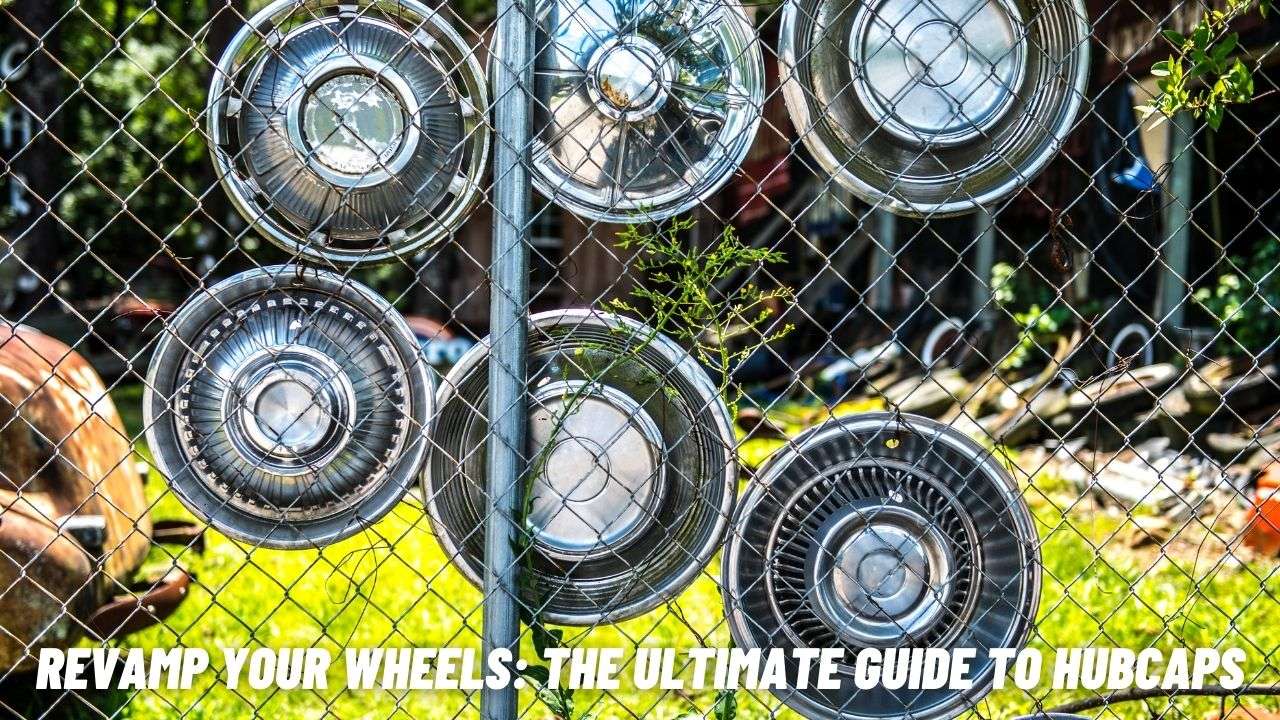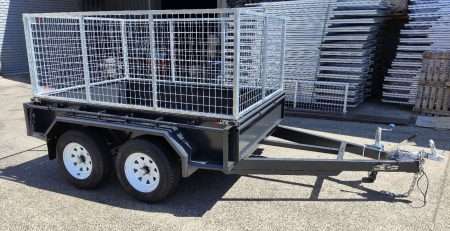
Revamp Your Wheels: The Ultimate Guide to Hubcaps
Understanding Hubcaps
Hubcaps, sometimes referred to as wheel covers, play an integral role in both the aesthetic appeal and functionality of a vehicle. This section offers a detailed overview of what hubcaps are and explores the variety of material and design options available.
What are hubcaps?
Hubcaps are decorative covers that fit over the centre of a vehicle’s wheel, concealing the lug nuts and other wheel components. Despite their seemingly simplistic purpose, they serve a dual function in enhancing the visual appeal of the vehicle and protecting the wheel’s hub from exposure to dirt, debris, and rust (WheelCovers.com).
Hubcaps, an important aspect of a vehicle’s aesthetic appeal, can elevate the overall look of the wheels, giving the vehicle a polished and refined appearance (Tyre Pirates). However, some drivers may prefer the look of alloy wheels or other wheel designs, opting not to use hubcaps. This decision largely depends on personal preference and style.
Material and Design Options
Hubcaps come in a variety of materials and design options, allowing vehicle owners to choose what best complements their vehicle’s aesthetic. The materials used to create hubcaps typically range from durable plastics to different types of metal, each offering its own set of benefits and drawbacks.
Plastic hubcaps, for instance, are generally affordable and lightweight. They’re easy to install and replace, making them a convenient choice for many vehicle owners. However, they may not offer the same level of durability as their metal counterparts.
Metal hubcaps, on the other hand, are known for their robustness and longevity. They can withstand harsh weather conditions and rough terrain without getting damaged easily. However, they can be more costly than plastic versions.
When it comes to design, hubcaps can range from simple, understated designs to intricate, elaborate patterns. Some hubcaps may feature the logo of the vehicle’s manufacturer, while others may come in different colours or finishes to match the vehicle’s exterior. The choice of design ultimately depends on the vehicle owner’s personal style and preferences.
Whether you’re looking to replace your vehicle’s existing hubcaps or considering the addition of hubcaps to your vehicle for added protection and aesthetic appeal, understanding what hubcaps are and the variety of options available is the first step.
Functional Role of Hubcaps
Hubcaps serve two major roles in a vehicle: they protect the wheels from dirt and debris, and they enhance the vehicle’s aesthetic appeal.
Protection from dirt and debris
Hubcaps are designed to cover the centre of the wheel, safeguarding it from dirt, debris, and damage. By doing so, they play an integral role in maintaining the longevity of the wheels. Hubcaps shield wheel bearings and lug nuts from dust, dirt, and other harmful elements, which can extend the lifespan of these components.
Furthermore, hubcaps provide an additional layer of protection for the wheels, preventing damage from road hazards like rocks and curbs. The purpose of hubcaps is not only aesthetic; they also protect the wheel and lug nuts from dirt, dust, and other debris, which can cause damage or corrosion over time (WikiHow).
Aesthetic Appeal and Customisation
In addition to their protective role, hubcaps are an essential part of a vehicle’s aesthetic appeal. They enhance the overall appearance of the wheels and lend the vehicle a more polished look.
Hubcaps come in a range of designs, colours, and finishes, allowing car owners to customise their vehicles according to their personal preferences. Whether you prefer a sleek, modern look or a classic, vintage style, there’s a hubcap design to match.
From a simple chrome finish to intricate designs and logos, hubcaps offer countless customisation options. They allow car owners to express their personal style and add a unique touch to their vehicles. Whether you’re a small business owner looking to brand your company’s vehicles or a car enthusiast looking to personalise your ride, hubcaps offer a cost-effective and stylish solution.
Remember, while the aesthetic appeal of hubcaps is important, their primary function is to protect the wheel and its components. Always choose hubcaps that offer a balance of style and functionality.
Types of Hubcaps
Understanding different types of hubcaps is essential when looking to enhance the aesthetics of your vehicle or protect the wheels from dirt, debris, and rust. This section will walk you through three popular types of hubcaps: dome hubcaps, bolt-on hubcaps, and spinner hubcaps.
Dome Hubcaps
Dome hubcaps, often made of plastic, are the most common type of hubcap. They feature a rounded, dome-shaped design that covers the centre of the wheel, providing an understated yet elegant look that complements most vehicle styles. These hubcaps are typically easy to install and remove, making them a convenient choice for those who prefer a simple, no-fuss solution for wheel protection and enhancement.
Bolt-On Hubcaps
Bolt-on hubcaps, typically made of metal, require bolts or screws for installation. This design provides a secure fit on the wheel hub, ensuring the hubcaps stay firmly in place, even in rugged driving conditions. Bolt-on hubcaps are a popular choice among drivers looking for durability and security. However, it’s essential to have the right tools for installation and removal, such as a tyre pressure gauge or lug nuts. For more information on installation, refer to our guide on wheel locks.
Spinner Hubcaps
Spinner hubcaps, also known as “spinners,” add a touch of flair to your wheels. These hubcaps are designed to rotate independently of the wheel, creating a spinning motion that adds a unique visual element to the vehicle’s appearance. They are a fun and eye-catching choice, especially for drivers looking for a way to stand out on the road. However, it’s crucial to ensure that the spinning motion does not interfere with the vehicle’s safety or performance (Blackburn Wheels).
In conclusion, choosing the right hubcaps depends on your personal style, vehicle requirements, and budget. While some drivers may prefer the look of alloy wheels or other types of wheel designs and choose not to use hubcaps, others find hubcaps an affordable and effective way to protect their wheels and enhance their vehicle’s appearance. Consider these options in light of your needs, and you’ll find the best hubcaps for your vehicle.
Choosing the Right Hubcaps
Being strategic about choosing hubcaps can make a significant difference in enhancing your vehicle’s aesthetics and protecting its wheels. This section provides an overview of the key considerations when selecting hubcaps, discussing factors like sizing, fitment, durability, and material.
Sizing and Fitment
The first step to finding the right hubcaps is to ensure they match the size of your wheels. Hubcaps come in different sizes to fit various wheel diameters (AutoZone). An ill-fitted hubcap won’t just look incorrect; it can also fall off and potentially become a safety hazard.
To find the correct size, check the tyre’s sidewall for a number that ends in “R,” followed by another number. That last number is the wheel diameter, which corresponds to the hubcap size.
Durability and material considerations
When it comes to the durability of hubcaps, the material used in their construction is a significant factor. Hubcaps are typically made from materials such as plastic, aluminium, or steel. Each material has its own advantages and disadvantages in terms of durability, weight, and cost.
Plastic hubcaps are usually the most affordable option and are lightweight, but they may not be as durable as their metal counterparts. Aluminium hubcaps can resist corrosion better than steel but may be more expensive. Steel hubcaps are usually very durable and can withstand harsh conditions, but they can be prone to rust if not properly cared for.
In general, hubcaps are more affordable and can be easily replaced if they become damaged or worn out (Tropical FCU). However, some drivers may prefer the look and feel of alloy wheels or other types of wheel designs. This is purely a matter of personal preference and style (WheelCovers.com).
It’s important to remember that while hubcaps can enhance the appearance of your vehicle, their primary function is to protect the wheels from dirt, debris, and damage. Therefore, when choosing hubcaps, you should consider not only their aesthetic appeal but also their durability and functionality.
Remember, the right hubcaps can not only add to your vehicle’s aesthetic appeal but also prolong the life of your wheels. Consider your options carefully, taking into account the size, material, durability, and style that best suit your needs and preferences.
Installation and maintenance
Once you’ve chosen the perfect hubcaps for your vehicle, the next step is to install and maintain them properly. This process involves cleaning and preparation, followed by the actual installation.
Cleaning and preparation
Before the installation, ensure to clean the wheel thoroughly. This is important, as any dirt or debris can interfere with the installation process and cause the hubcap to become loose or misaligned over time.
To clean the wheel:
- Remove any existing hubcaps or wheel covers.
- Use a brush or cloth to remove any dirt or debris from the wheel.
- Rinse the wheel with water and let it dry completely.
This cleaning process not only ensures a secure fit but also helps improve the lifespan of the hubcaps.
Securing Hubcaps to Wheels
After the wheel is clean and dry, it’s time to install the hubcaps. Align the holes in the hubcap with the lug nuts on the wheel. Applying pressure evenly around the edges of the hubcap until it snaps into place.
Here are the steps to follow:
- Place the hubcap over the wheel, aligning the holes on the hubcap with the lug nuts on the wheel.
- Apply pressure evenly around the edges of the hubcap until it snaps into place.
- Check the hubcap to ensure it’s securely attached.
It’s important to make sure the hubcap is securely attached to prevent it from falling off while driving. In case a hubcap becomes loose or falls off, it should be reinstalled as soon as possible to prevent further damage to the wheel and to maintain the aesthetic appearance of the vehicle.
Hubcaps can be easily secured in place using clips, bolts, or a snap-on design and can be removed with the same ease, making them a convenient option for drivers (WheelCovers.com).
Regular maintenance and periodic checks will ensure that your hubcaps stay securely in place and maintain their appearance for longer. For more on tyre care and maintenance, have a look at our articles on tyre pressure gauges and tyre shine.
Potential Drawbacks
While hubcaps offer a variety of benefits, including protection for your wheels and aesthetic enhancement, there are some potential drawbacks to consider. These include the risk of hubcaps becoming loose or detached and the aesthetic comparison with alloy wheels.
Loose or detached hubcaps
One of the most common issues with hubcaps is that they may become loose or even fall off while driving, especially if they are not securely attached. This can be a safety concern and may result in damage to the hubcap or the wheel. Loose or detached hubcaps can pose a risk to other vehicles on the road, as they can become projectiles and cause accidents.
In addition, hubcaps that are not securely attached can create a rattling noise while driving, which can be annoying and distracting for the driver. To avoid these problems, it is important to regularly check the tightness of hubcaps and ensure they are properly secured.
Furthermore, if a hubcap becomes loose or falls off while driving, it should be reinstalled as soon as possible to prevent further damage to the wheel and to maintain the aesthetic appearance of the vehicle.
Aesthetics Versus Alloy Wheels
Aesthetically, some drivers may prefer the look of alloy wheels over hubcaps. This is a matter of personal preference, and it depends on a number of things, including the road’s conditions and the wheel’s design. While hubcaps offer a cost-effective solution for enhancing the appearance of wheels, they may not provide the same premium look as alloy wheels.
It’s important to weigh the pros and cons of hubcaps and consider your individual needs and preferences when deciding on the best option for your vehicle. Always remember to perform regular maintenance and checks on your hubcaps, such as ensuring they are securely attached, to maximise their lifespan and effectiveness. For more information on wheel and tyre accessories and parts, don’t forget to check out our articles on lug nuts, wheel locks, and wheel spacers.
Author
I am Rahatul Ashiq Tamal. Another author of Muscle Trailers. Muscle Trailers is a well-known trailer brand in Sydney, Melbourne & Adelaide

How to Mount a Spare Tire on Your Trailer: A Simple Step-by-Step Guide
Trailer service centers receive over 1 million phone calls and 1.3 million emails each year about trailer maintenance problems....

How to Fix RV Roof Leaks: Simple Roof Leak Detection Guide for Beginners
Did you know DIY RV roof repairs can cost under $50? But undetected leaks could lead to substantially higher repair...

Starting a Food Truck Business in Australia: From Trailer Selection to Launch
The Australian mobile food market has evolved into a billion-dollar industry. This makes a food truck...
